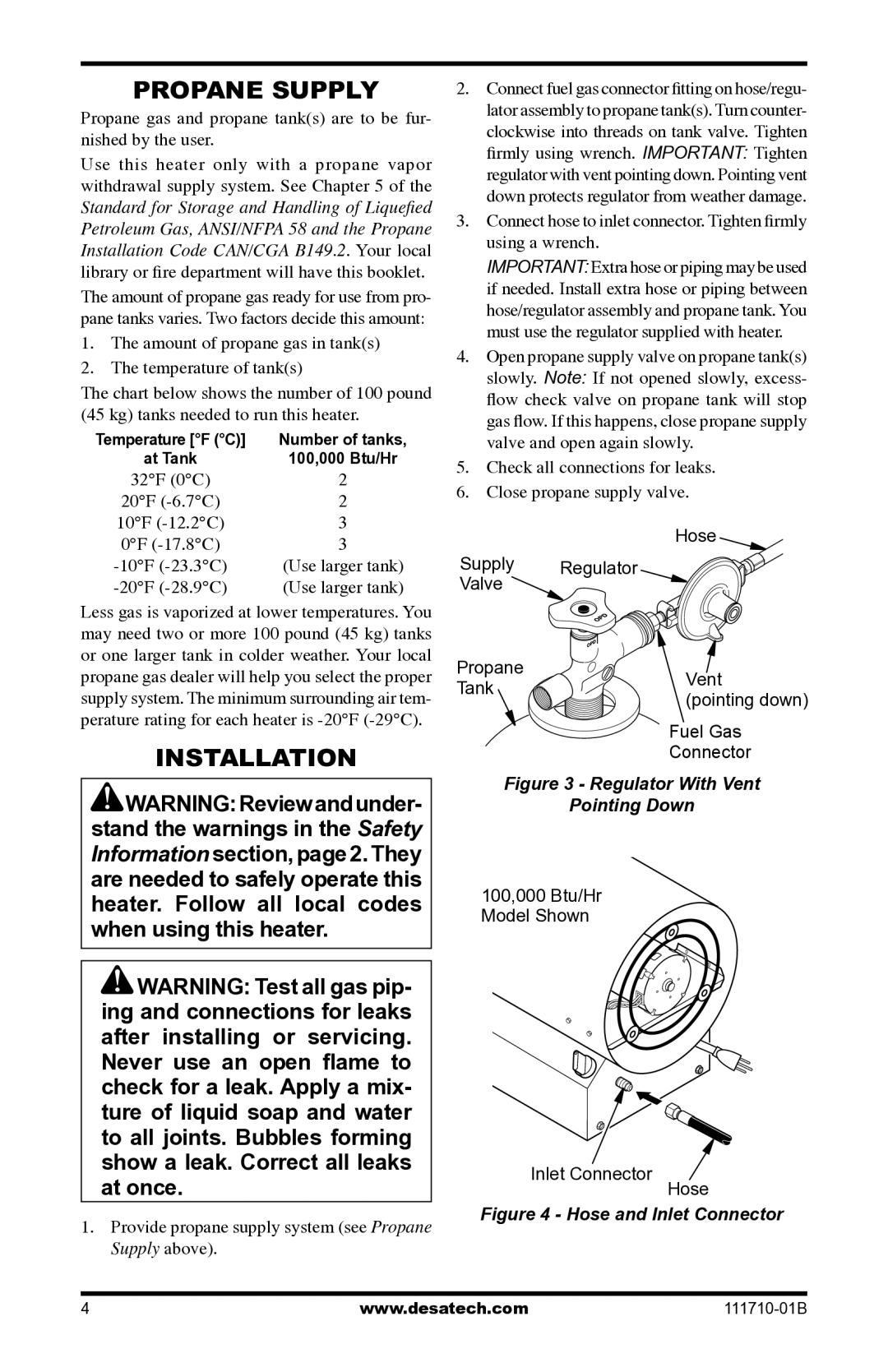RLP100 specifications
Desa RLP100 is an innovative technological marvel designed for both indoor and outdoor applications. As a compact and versatile solution, it combines cutting-edge features and reliable performance in one package. The RLP100 is designed with user convenience and efficiency in mind, making it an ideal choice for various sectors, including residential, commercial, and industrial environments.One of the standout features of the Desa RLP100 is its energy efficiency. Utilizing advanced energy-saving technologies, this device optimally manages power consumption while maintaining high performance levels. This not only reduces operational costs for users but also contributes positively to environmental conservation.
The RLP100 is equipped with a state-of-the-art control system that allows for seamless integration with modern smart home technologies. Users can easily manage settings through a mobile application or centralized control units, providing remote access and enhancing user experience. The system supports voice commands, making it compatible with popular virtual assistants, thus catering to a growing demand for smart living solutions.
Safety is a top priority with the RLP100, which comes with an array of built-in safety features. These include automatic shut-off mechanisms, temperature regulation, and fault detection systems that alert users to potential issues. Such robust safety measures not only protect users but also enhance the longevity of the device.
The Desa RLP100 is designed for adaptability, featuring adjustable settings that can be customized to meet the specific needs of different environments. Whether it’s heating, cooling, or air purification, the RLP100 delivers results that can be tailored to user preferences. Its compact design ensures that it can fit into small or constrained spaces without compromising performance.
Moreover, the RLP100 employs innovative filtration technologies that ensure optimal air quality. With multi-layer filtration systems, it effectively removes allergens, dust, and other pollutants, making it a significant asset for health-conscious users. This feature is particularly beneficial in urban areas where air quality can be a concern.
In summary, the Desa RLP100 embodies modern technology with its impressive features, user-friendly design, and a strong focus on safety and efficiency. Its ability to adapt to varying needs, coupled with its smart integration capabilities, positions it as a leader in the market, appealing to anyone seeking a reliable and advanced solution for enhancing their living or working environment.

